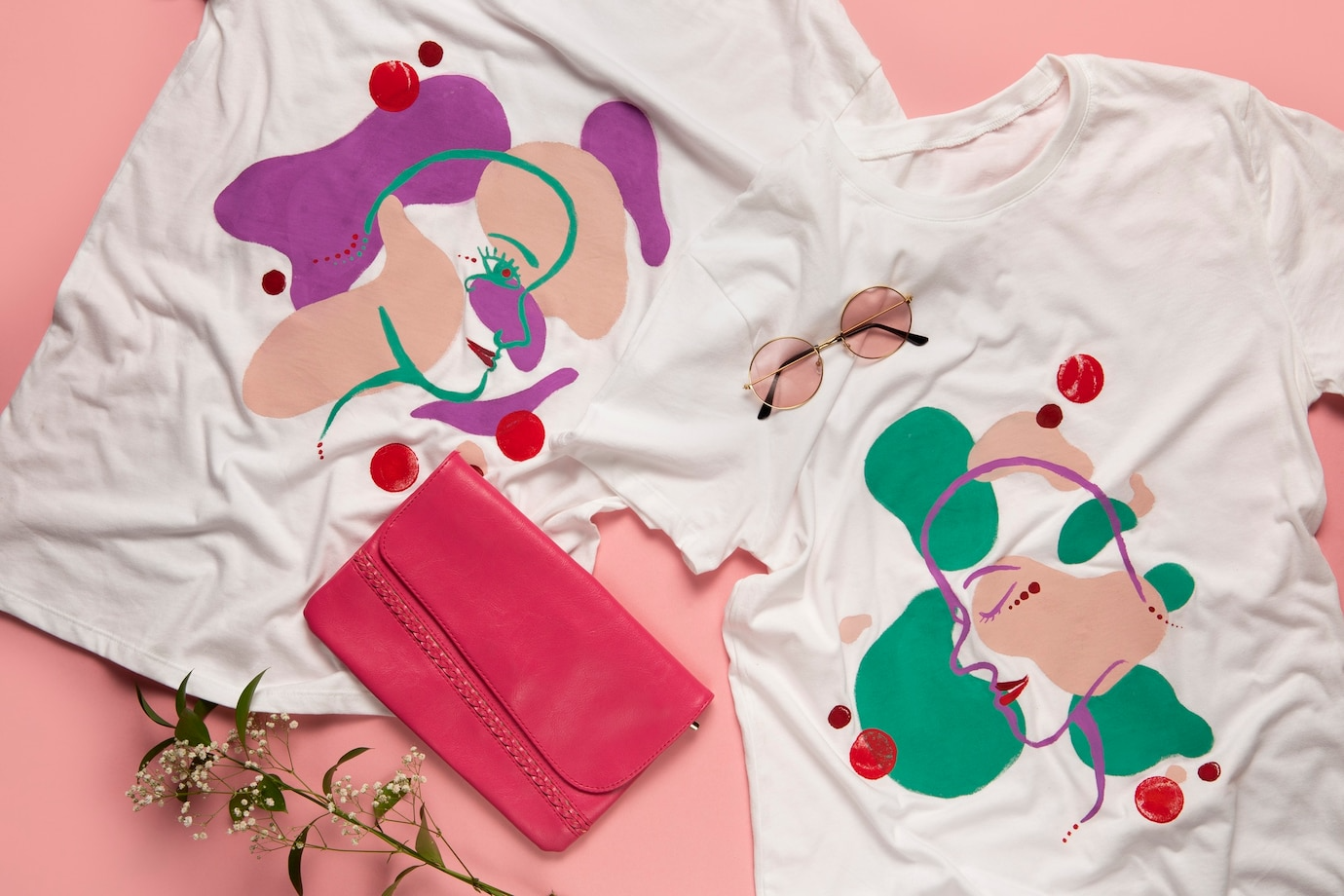The t-shirt is a universally recognized garment that has seamlessly woven its way through our daily lives, but few stop to consider its fascinating evolution. Initially designed for utility, the t-shirt has transformed into an essential piece that transcends time, culture, and style. This blog post will take you on a journey through the intriguing history of the t-shirt, examining its humble beginnings, its rise as a fashionable statement, the role of pop culture, and how it became intertwined with social movements. Join me as we explore this simple yet groundbreaking piece of clothing that has become a staple in wardrobes around the world.
The Origins of the T-Shirt
To understand the t-shirt’s evolution into a fashion must-have, it’s important to first look back at its origins. The roots of this garment can be traced to the late 19th century, when it was initially designed as an undergarment for men.
The Birth of the Undershirt
In the late 1800s, working-class men wore heavy woolen undergarments to keep warm, particularly in industrial settings. However, as the need for comfort and practicality grew, manufacturers began to innovate.
The undershirt, primarily made from cotton, emerged as a lightweight alternative. Its simplicity—essentially a short-sleeved shirt with no collar—made it easy to wear beneath more formal attire.
As factories cranked out more and more garments, these cotton undershirts became increasingly affordable and accessible for the working masses. The basic silhouette of what we now call the t-shirt began to take shape during this period.
Military Influence
The early 20th century saw the t-shirt gain further popularity thanks in large part to its adoption by the military. During World War I, soldiers were issued these comfortable cotton shirts as a part of their uniforms.
The practicality of the t-shirt allowed for ease of movement, while its lightweight fabric provided some relief from the sweltering heat. Soldiers returning home after the war helped to popularize the garment, wearing it as casual attire in their post-war lives.
This shift marked a significant turning point in the garment’s history, as it began to break free from its identity as merely an undergarment.
1920s to 1940s: The T-Shirt Takes Center Stage
By the 1920s, the t-shirt had evolved from a mere underlayer to an accepted outerwear item. With brands like Fruit of the Loom and Hanes entering the market, the t-shirt became a symbol of leisure and casual wear.
During this period, screen printing technology also emerged. This allowed for designs, logos, and images to be printed directly onto the fabric, setting the stage for the t-shirt’s transformation into a medium for personal expression.
The t-shirt not only became a staple in American wardrobes, but it also began to represent a new cultural identity. As people embraced a more relaxed lifestyle, the t-shirt became synonymous with comfort and freedom.
The Rise of the T-Shirt as a Fashion Statement
As the t-shirt continued to evolve, it gradually shed its utilitarian image and took on new meanings in popular culture. By mid-20th century, the t-shirt had firmly established itself as a fashionable choice.
The Influence of Hollywood
Hollywood played a pivotal role in turning the t-shirt into a fashion statement. Iconic figures such as Marlon Brando and James Dean made their mark in films wearing nothing but a simple t-shirt.
These portrayals captured the essence of youth rebellion and laid-back style, influencing a generation. The t-shirt quickly became a symbol of masculinity, often associated with strength and independence.
Moreover, actresses like Marilyn Monroe showcased the t-shirt in various glamorous ways, further solidifying its place in high-fashion contexts. This duality—the rugged masculinity and effortless femininity—allowed the t-shirt to appeal to a diverse audience.
The Counterculture Movement
The t-shirt’s evolution took another turn in the 1960s, driven largely by the counterculture movement. Activists used the t-shirt as a canvas to convey political messages, slogans, and artistic expressions.
Protestors wore t-shirts adorned with powerful phrases advocating for civil rights, anti-war sentiments, and environmental awareness. The shirt became not just a garment, but a vehicle for social change. The phrase “the medium is the message” resonates strongly here, as the t-shirt became a tool through which individuals could voice their beliefs.
T-shirts from this era are now coveted collectibles, encapsulating a sense of urgency and power that fueled social change.
Fashion Designers Embrace the T-Shirt
The 1980s marked a significant moment when high-fashion designers began to experiment with the t-shirt format. Designers like Jean-Paul Gaultier and Vivienne Westwood elevated the t-shirt to runway status, incorporating it into their haute couture collections.
Suddenly, the t-shirt became both a casual staple and a chic statement piece. It was no longer confined to the realm of streetwear; it began to appear in luxury boutiques and fashion shows.
This melding of high fashion and street style allowed the t-shirt to transcend socio-economic boundaries, making it accessible yet aspirational for many.
The Cultural Impact of the T-Shirt
The t-shirt has moved well beyond its original function and has become an integral part of cultural expression and identity. It serves as a canvas for art, advertising, and societal commentary.
T-Shirts as Art
Throughout history, artists have utilized the t-shirt as a medium for expressing their vision. Famous artists like Andy Warhol and Keith Haring created iconic designs that cemented the t-shirt’s status as wearable art.
For example, Warhol’s Campbell’s Soup Can design blurred the lines between consumerism and fine art, transforming the mundane into something extraordinary.
Similarly, Haring’s vibrant illustrations brought social issues to life and made art accessible to a wider audience. These artistic t-shirts not only reflect the artist’s creativity but also engage viewers in conversations about culture and society.
Branding and Marketing
Businesses quickly realized the marketing potential of the t-shirt. Brands began to use them as promotional items, emblazoning logos and catchy slogans across the fabric.
T-shirts soon became synonymous with branding campaigns, used effectively at events and festivals. Tech giants like Apple and Google incorporated t-shirts into their company cultures, distributing them as merchandise that reinforced brand loyalty.
Today, wearing a branded t-shirt communicates not only consumer affiliation but also personal identity. It’s a form of status signaling, indicating one’s interests or values through the brands they choose to endorse.
The T-Shirt and Social Movements
As mentioned earlier, the t-shirt has long been a powerful tool for activism. In recent years, movements such as Black Lives Matter and climate change advocacy have utilized the power of the t-shirt to spread their messages.
Wearing a t-shirt that represents a cause can spark discussions and raise awareness. For many, it serves as a badge of honor, conveying a commitment to social justice and sustainable practices.
Social media platforms amplify this effect even further, as individuals showcase their t-shirts, generating visibility and support for various causes. The t-shirt has evolved into a potent symbol of solidarity and collective action.
The Modern-Day T-Shirt: Sustainability and Innovation
As we step into the 21st century, the t-shirt continues to adapt to changing societal norms and consumer expectations. Today’s t-shirts are characterized by an emphasis on sustainability and innovation.
Eco-Friendly Fabrics
With growing concerns over environmental degradation, many apparel brands have shifted their focus toward eco-friendly materials. Organic cotton, recycled polyester, and hemp are becoming increasingly popular choices for t-shirt production.
These sustainable fabrics help reduce the carbon footprint associated with garment manufacturing, appealing to environmentally conscious consumers. Brands that prioritize eco-friendly practices often find a loyal following among those who value sustainability.
Furthermore, advancements in technology enable the development of new materials that offer durability and performance without harming the planet.
Customization and Personalization
The advent of digital printing and e-commerce has revolutionized the way consumers approach t-shirt purchasing. Personalization options allow people to create unique garments that reflect their individuality.
From custom prints to DIY designs, the modern consumer is empowered to express themselves creatively. This trend fosters a deeper connection between the wearer and their t-shirt, elevating it from a mere article of clothing to a reflection of personal values and experiences.
As a result, companies that offer customization options have seen increased sales and engagement, showcasing how personal expression continues to drive t-shirt trends.
Technological Innovations
Technology is also influencing the future of t-shirt design. Smart textiles are emerging that can monitor health metrics or even change color based on the wearer’s mood.
Innovations like these open up exciting possibilities for what the t-shirt can become. They marry fashion with functionality, allowing for a blend of style and purpose. As tech-savvy consumers seek out products that enhance their lifestyles, the t-shirt stands poised to adapt and thrive in this new landscape.
Conclusion
The history of the t-shirt is much more than a story of fabric and stitching; it’s the tale of a garment that has reflected cultural shifts, societal values, and personal identities throughout history. From its humble beginnings as an undershirt to its emergence as a fashionable staple, the t-shirt embodies the idea of adaptability and self-expression.
As we embrace the future, the t-shirt continues to evolve, responding to the needs of contemporary society, focusing on sustainability and innovation. It remains a powerful medium for artistic expression, social commentary, and cultural identity. The journey of the t-shirt reflects our own stories, aspirations, and transformations, solidifying its place in our hearts and wardrobes for generations to come.


